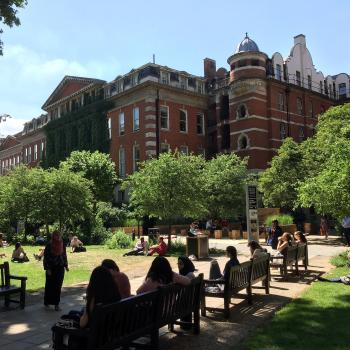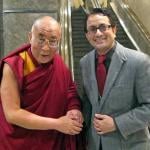
From an incomplete manuscript of mine:
Is there no reason for hope beyond a vague sentimentality? Shakespeare’s Hamlet spoke of death as “the undiscover’d country from whose bourn no traveler returns.”[1] Yet there have always been stories of contacts with deceased persons. Such accounts are known to every culture in every period. (The play Hamlet itself features such a contact as a prominent element in its plot.) “Six weeks after his death,” reports Carl Jung, “my father appeared to me in a dream. . . . It was an unforgettable experience, and it forced me for the first time to think about life after death.”[2] A little girl in Canada was left motherless, and could not be comforted. “Suddenly one day, everyone noticed the little girl was happy. When they asked here what had happened, she described her mother appearing to her.”[3]
It is not at all obvious that “travelers” do not, occasionally, return from death—a “country” that does not seem to be wholly “undiscovered.”
One relatively recent book, the excruciatingly titled 1996 collection Hello from Heaven!, presents more than 350 such stories, culled from 3300 firsthand contemporary anecdotes gathered from two thousand people during the late 1980s and early 1990s. They range from sensing the presence of a dead friend or relative up through full visual and aural interactions with the dead. (It should be noted that the book’s authors, Bill Guggenheim and Judy Guggenheim, concentrated on claims of spontaneous and direct “after-death communications,” avoiding any data from séances, crystal balls, and ouija boards.)[4]
Earlier, the well-known mid-twentieth century Protestant pastor and author Norman Vincent Peale, in his often reprinted 1952 best-seller The Power of Positive Thinking, had recounted a story told to him, in turn, by a songwriter named Geoffrey O’Hara. Among O’Hara’s most popular songs was one entitled “There is No Death.” It was inspired by the account of a colonel in the First World War, whose regiment had been wiped out in a bloody engagement with the enemy. As the distraught colonel had paced up and down the trench after the battle, he said, he could still sense the presence of his dead companions. “I tell you,” he said to O’Hara, “there is no death.”[5]
[1] William Shakespeare, Hamlet, III.i.78-80. As we shall see in later chapters, there is good reason to think Hamlet’s statement false, even apart from the phenomenon of near-death experiences that is the focus of the present chapter. Both Moroni and Jesus of Nazareth, for example, are plausible counterexamples, suggesting that “travelers” do indeed return from death.
[2] Carl Jung, Memories, Dreams, Reflections (New York: Pantheon Books, 1973). I have heard many such stories, including one related quite emotionally by an elderly German man when I was a teenager.
[3] $As recounted in Lee Nelson, Beyond the Veil, vol. 1 (Orem, UT: Cedar Fort, 1988), 40.
[4] Bill Guggenheim and Judy Guggenheim, Hello from Heaven! (New York: Bantam Books, 1996).
[5] Norman Vincent Peale, The Power of Positive Thinking (Greenwich, CT: Fawcett Publications, 1963), 210.












